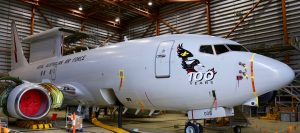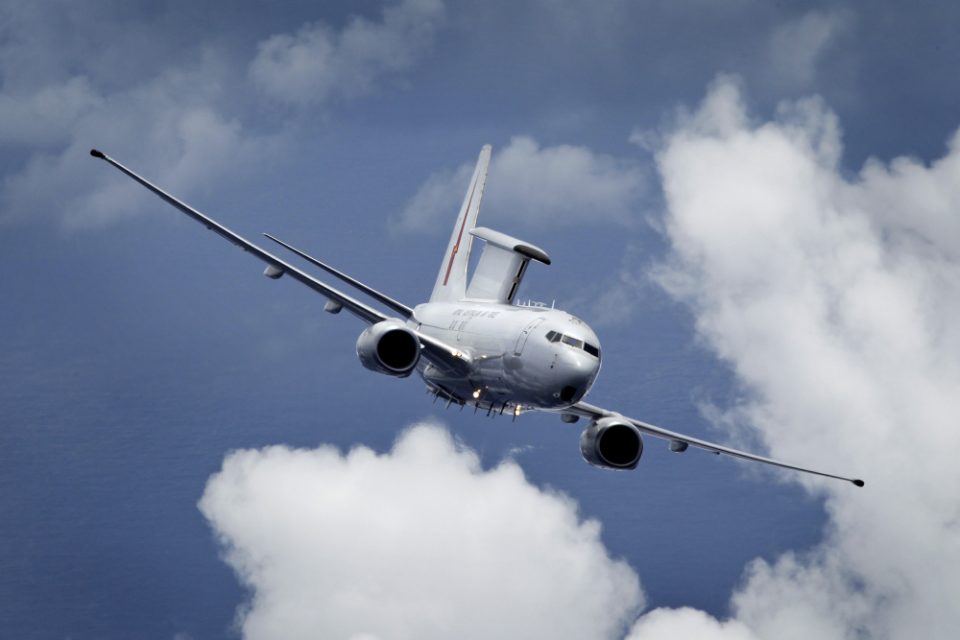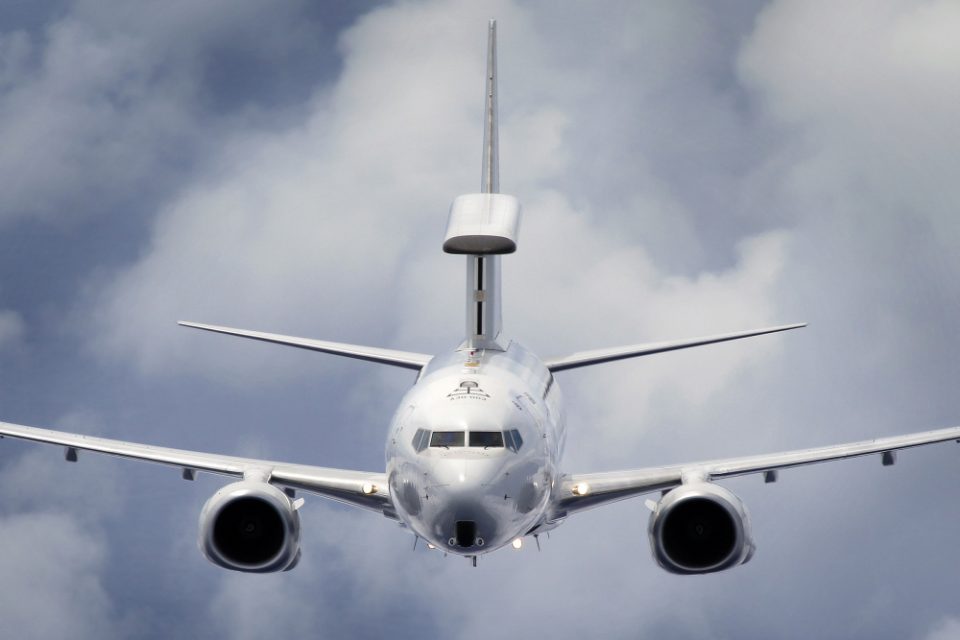2016-08-08 On August 5, 2016, Second Line of Defense visited Williamtown Airbase to meet with Group Captain Stuart Bellingham, Commanding Officer of No. 42 Wing (the Wedgetail squadron).
When you visit the squadron what is striking is that the squadron is colocated with the System Program Office (SPO).
When you go into the SPO you find the software development center, the virtual Wedgetaill operating room and the training rooms where the newbies learn to be Wedgetailers.
Virtual Wedgetail is a key combat learning asset, notably with coalition partners. It is a full up current operating system and consoles which is used for working with the joint and coalition partners,
Wedgetail is not a classic air battlement management system but a much broader asset which is becoming integrated into army and navy operations as well.
The software evolves over time and with it the capabilities of the aircraft.

Notably, it is the squadron which is driving the demand signal based on their operational experiences and the briefs to industry are really about combat learning and what they want next in the aircraft.
The squadron is broadly engaged with army and navy in shaping their joint contribution.
And this affects their training and ops obviously.
With AWACS the main community they serve are fighters and their support structure; with Wedgetail they are working directly with Navy and Army in providing joint SA and related capabilities.
And the evolution of the aircraft is dead center on Tron Warfare with regard to software development.
Because they have 6 Wedgetails and 15 P-8s so they are looking to shape as much convergence as possible.
According to the Australian Ministry of Defence:
The E-7A Wedgetail provides Australia with one of the most advanced air battlespace management capabilities in the world.
The E-7A Wedgetail is based on a Boeing 737-700, with the addition of an advanced Multi-Role Electronically Scanned Array (MESA) radar and 10 mission crew consoles, to create one of the most advanced pieces of technology for the Australian Defence Force.
Based at RAAF Base Williamtown, the six E-7A Wedgetails are capable of communicating with other aircraft and providing air control from the sky. They can cover four million square kilometres during a single 10 hour mission.
The E-7A Wedgetail represents an entirely new capability for the Australian Defence Force, providing an airborne early warning and control (AEW&C) platform that can gather information from a wide variety of sources, analyse it and distribute it to other air and surface assets.
The E-7A Wedgetail can control the tactical battle space, providing direction for fighter aircraft, surface combatants and land based elements, as well as supporting aircraft such as tankers and intelligence platforms.
Based on the 737-700 commercial airliner airframe, the E-7A Wedgetail features advanced multi role electronically scanned radar and 10 state-of-the-art mission crew consoles that are able to track airborne and maritime targets simultaneously.
The E-7A Wedgetail significantly multiplies the effectiveness of our existing Navy, Army and Air Force, and will help Australia maintain a capability edge well into the future.
The E-7A Wedgetail has participated in Exercise Bersama Lima, Exercise Cope North, Exercise Red Flag, Exercise Pitch Black and is currently deployed on Operation OKRA.
Final Operational Capability for the E-7A Wedgetail platform was announced in May 2015.
The MESA radar built and evolved by Northrop Grumman is a key part of the unique capabilities of the E-7.
According to Northrop Grumman:
The MESA radar provides air-to-air coverage, air-to-surface coverage, integrated identification friend or foe, special track beams and focused sector operation.
MESA builds on the company’s expertise acquired from the AWACS (Airborne Warning and Control System) to bring military airborne surveillance capabilities to mid-size Boeing 737 aircraft.
MESA enables sophisticated air-to-air and maritime coverage and integrated identification of friend-or-foe systems.
Advances in technology have caused a revolution in the capabilities and flexibility of airborne surveillance systems and sensors used in Airborne Early Warning & Control (AEW&C) systems.
Developments in distributed transmitters, commercial off-the-shelf processing and high-performance antenna arrays have enabled ES multirole electronically scanned array (MESA) radar to be cost effectively applied to the next generation Boeing 737-700 series aircraft.
The slideshow highlights the Wedgetail in training or in operations and the photos are credited to the Australian Ministry of Defence.
Photos 1 and 2 show Wedgetail in operations in Iraq.
Photos 3-5 show the Wedgetail during training sorties.
Photos 6 shows the Wedgetail being refueled by the KC-30A near Williamtown Airbase.
Photo 7 shows an E-7A Wedgetail airborne early warning, control and surveillance aircraft at its operating base in the Middle East Region after completing a new record by flying a 17.1 hour operational mission over Iraq and Syria.
Photo 8 shows a Wedgetail maintenance crew in the Middle East.
Photo 9 shows the Wedgetail at Red Flag 16-1.
Photos 10-6 show the crew and maintainers of a RAAF E-7A Wedgetail airborne command and control aircraft, are seen preparing for their rotation’s final flight of their deployment, departing Australia’s main logistics base for ADF operations in the Middle East region. This was the final flight for Rotation Five of E-7A aircrew and maintenance personnel before the end of their deployment.
The final two photos show the Wedgetail in operations in Iraq.



